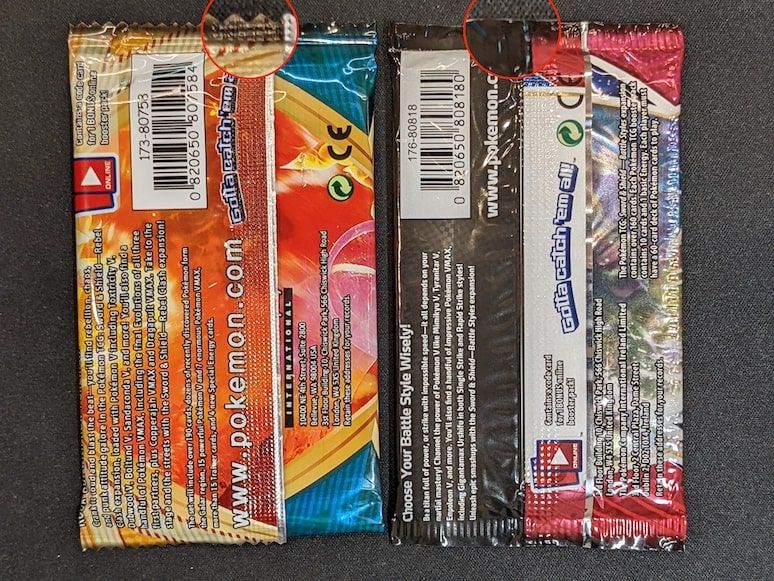Unfortunately, with a product as popular as the Pokémon Trading Card Game, there are those who will counterfeit Pokémon merchandise for their own gain. It is important to be reminded that creation and distribution of counterfeit Pokémon merchandise is a criminal act. Pokémon in all its forms is a protected trademark in South Africa.
What to do if you come across any counterfeit product in South Africa?
- You can contact us (nick@zapdoaks.com or 079 189 3914) and we will submit your reporting through the official channels; or
- Directly report the counterfeit product through the official channel: tip-offs@solarpop.co.za
- Ensure that you include the link to an online listing, or an address and name of the store and pictures of the product.
Before continuing here are a couple notes on how to use this guide. Barring some glaring mistakes in the fake, this guide won’t tell you with 100% confidence that your Pokémon card is fake. Because of this, many statements in this article include important caveats and use wording such as describing your card as “likely” or “probably” fake.
So then, what’s the point of this guide? It’s an extensive guide and resource to consult. If you are wondering if a card you want to buy or sell is fake, start with reading through this entire guide. Consider everything in it. Then, at the end, use it to make a call on the likelihood your card is fake. Should you have any questions please feel free to reach out to us at nick@zapdoaks.com and we can assist.
The below information has been summarised from various sources and has been compiled to provide you with a thorough understanding on how to identify fake cards. Please refer to the sources at the end of the page for the full list.
If your ideal medium of content is through video then we highly recommend the below YouTube video by Insider Tech on “How to Spot Fake Pokémon Cards”.
How to Tell if Pokémon Cards Are Fake
#1 Trusting Your Gut / Buying smart
Sometimes you’ll run into a card that just feels “off.” Trust that feeling. Your intuition can recognize patterns and inconsistencies before your conscious mind does. Plus, the more time you spend interacting with real Pokémon cards, the more sensitive your intuition will become.
- Whenever you buy sealed Pokémon cards, exercise a healthy amount of caution. If a deal looks too good to be true, it probably is.
- Don’t buy boxes or packs from unknown or unreliable sources. Flea markets are lousy with counterfeit Pokémon products of varying quality.
- Online marketplaces like Facebook, Gumtree and OLX can be tricky. We’re obviously biased, but we think our store is the safest way to get authentic cards for the best price. Whatever platform you decide to use, make sure they have strong policies that protect you from fraud.
When something about a card raises your suspicions, it’s time to perform some research.
#2 Reading the Card(s) / Inspecting the Product(s)
Look at the card. Then ask yourself: does anything seem off? Read it and check to see if there are any simple errors in the card. Here is a short list of characteristics to check:
- Does this Pokémon exist?
- Does the card have an accent over every single “e” in Pokémon?
- Is the card free of spelling mistakes and obvious grammar mistakes, such as missing punctuation?
- Does the card have the year it was printed?
- Does the card have the number of elemental symbols in all the correct places of the card?
- Does the Pokémon have a reasonable amount of HP? For example, if you have an Eevee with over 1,000 HP, then that card is probably a fake. If you are unsure as to what’s unreasonable you could look up the card on the official Pokémon TCG card database to get a ballpark range of where its HP is usually at.
- References to Pokémon sets besides the one the product is from.
If you answered no to one or several of these questions, odds are that you have a fake Pokémon card. This is a great and easy way to spot a fake immediately.
Illustrative examples of the points above identifying fake Pokémon cards
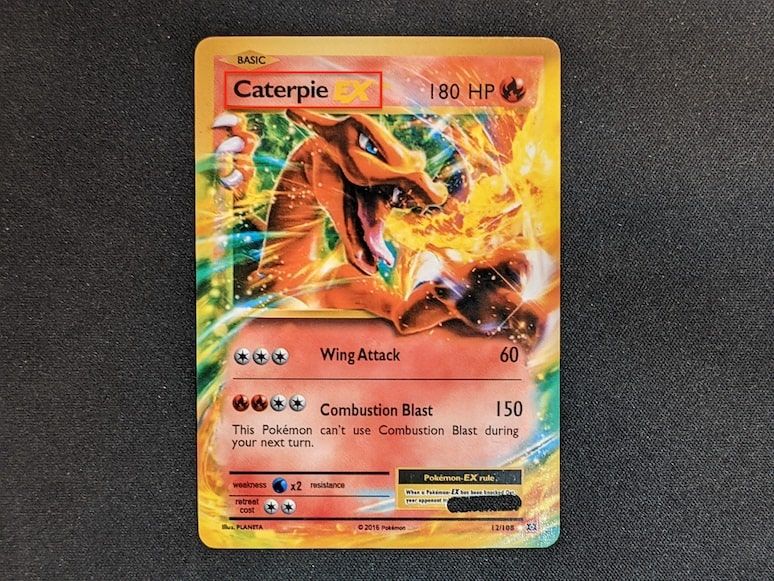
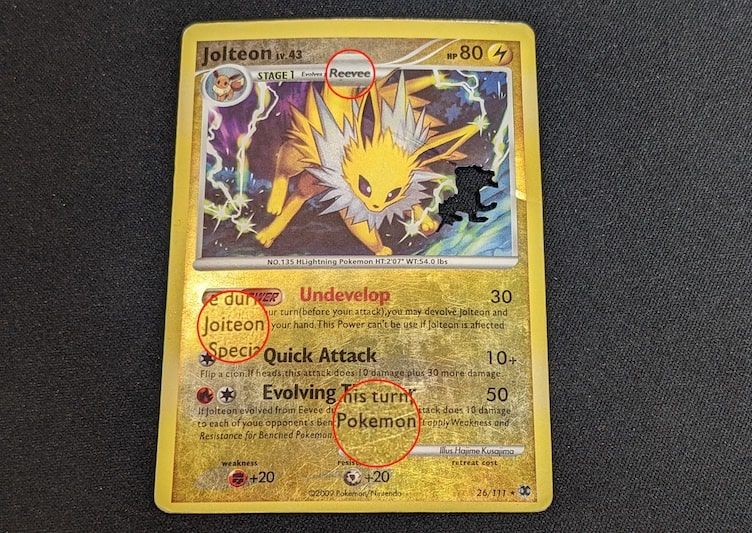
#6 Comparing to genuine product / online scans
An easy and dependable way to check if a Pokémon card is fake is to compare it to a real card.
Look at the two cards carefully and see if there are any easy-to-spot differences.
- Does the written text on each card match up word-for-word? For example, a fake might have slightly different description text or a different attack than the original or different punctuation.
- Also compare the physical characteristics of the card with the original. Is the card in question the same size as the original? If it’s larger or smaller than a standard card from the set, it’s likely a fake.
- Another important consideration is the cardstock. The hardest element of a counterfeit to recreate is the cardstock. Does the card bend in a similar way or does one feel flimsy and bend more easily?
- Excessive weight difference.
- Cardstock is too thin or too weak.
- Flat, untextured foiling when the foiling style should leave a texture.
- Messy edges. The edges of a real Pokémon card are straight and clean, without any cardboard residue.
- Does the text look a little blurry? A real card will have clean, crisp printing on the font. Fakes will have lower quality print, which is most visible when looking at the tiny text.
- Also compare the colours on the cards. Make sure that the color saturation is the same.
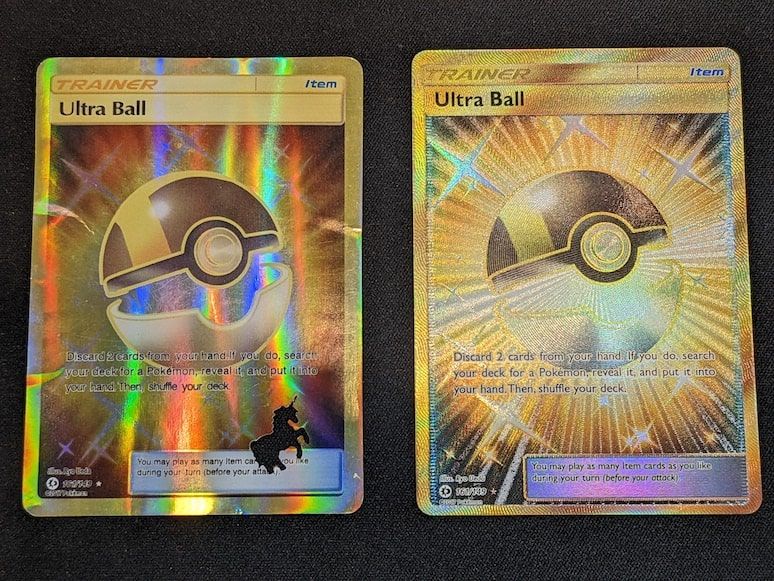
I don’t have a copy of a genuine card, is there anything else I can compare to?
Pull up an image of the card online using a reputable Pokémon TCG database like the the official Trading Card Database or pkmncards.com. Compare your card to the picture and look for any inconsistencies.
#7 Comparing the back of the card
Compare the card’s back to the back of a card that is known to be authentic. If both cards are authentic, their backs should be nearly identical. The back of a real Pokémon card is full of details that scammers rarely mimic perfectly.
All Pokémon card printed in English has the exact same card back, whether it was printed in 2021 or 1999 (there may be some exceptions, however, those are well documented online).
Be on the lookout for;
- Bleeding between the blue border and the blue in the rest of the card’s design. The border on the back of real Pokémon cards is quite distinct, and different from the other blues in the design.
- Washed out colors.
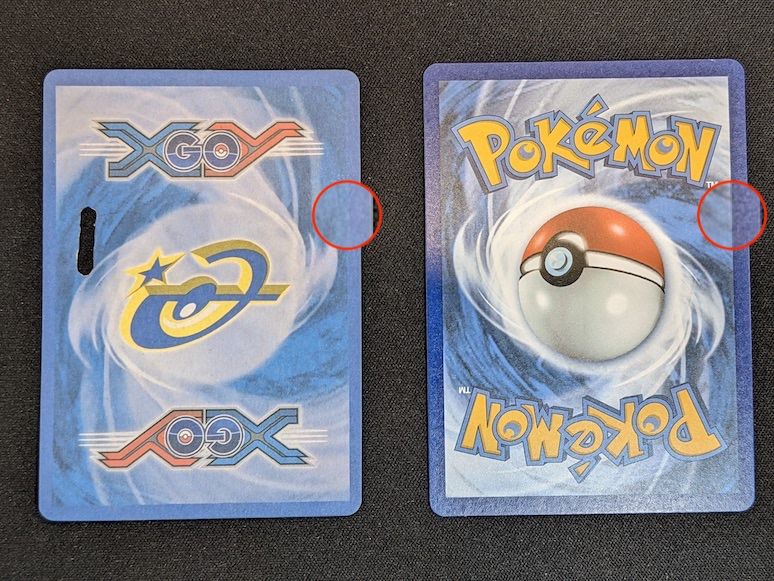
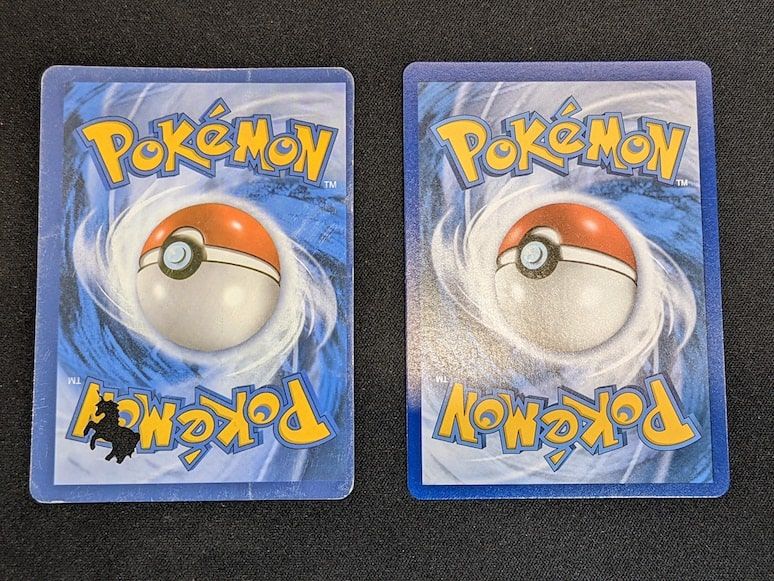
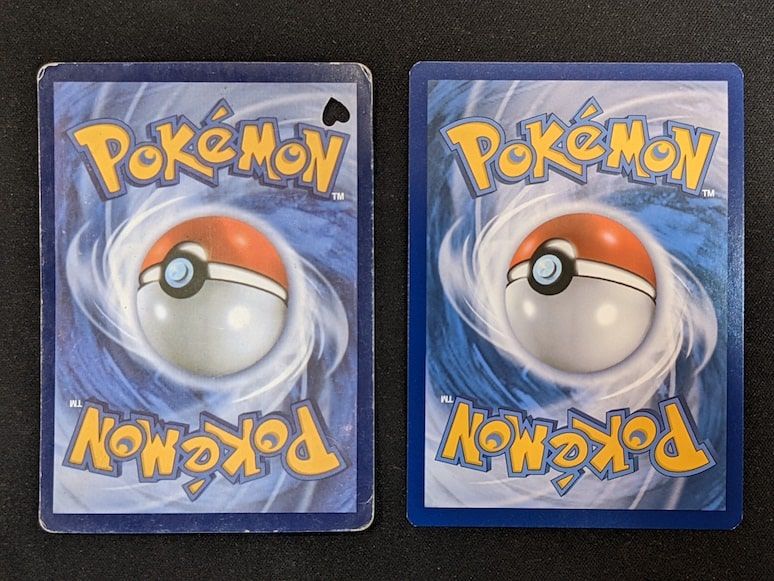
Disclaimer: Unless you have a lot of experience with Pokémon cards, you’ll need an authentic card to do an accurate comparison. Also, this test is impossible if you’re shopping online and the seller doesn’t include a picture of the card’s back.
#8 What if I’m looking to buy online and can’t hold the card in my hand?
As a rule of thumb, it is best practice to take a card out of a sleeve and examine it for yourself. As mentioned, a fake card will feel different to a genuine card. However, this isn’t always an option, especially now during the pandemic and as Facebook groups have become a popular and convenient place to buy and sell.
There are a few tips in this case. First, ask for a photo of the card you’re buying and examine it visually using all the aforementioned tips. Then, evaluate the credibility of the seller. If someone can’t provide you with a unique photo of the card, that’s a bad sign. Also look for previous reviews of the seller. For context, there aren’t any reported cases of mass Pokémon card fraud so you don’t need to be overly anxious about buying a card. Just cover the basics and you will generally be fine.
Conclusion: If you are unsure; ask.
When in doubt, consult others who have experience spotting fakes. Contact a reputable seller and ask them their professional opinion. There are Facebook groups where people buy and sell. Post an image of the card. If a group of people respond with a strong consensus that it’s fake, and they explain why, then you probably have a fake card.
Before you go: this guide is not a replacement for professional advice. If you plan to spend big bucks on a rare Pokémon card, you should consult as many sources as possible when vetting a card. Feel free to contact us should you need assistance or want to be put into contact with other reputable individuals to verify the cards.
Special Thanks & Sources
- https://www.unplugyourself.co.za/counterfeit-pokemon/
- https://www.justinbasil.com/guide/fakes
- https://infinite.tcgplayer.com/article/How-to-Spot-Fake-Pok%C3%A9mon-Cards/0b3c551c-39e2-4949-ac46-3cb27e215b04/



